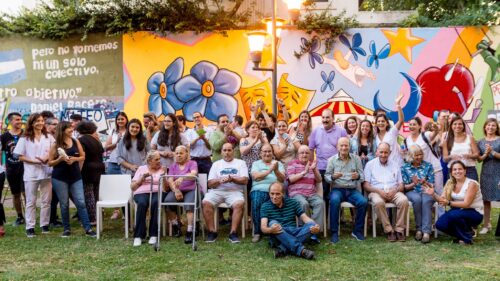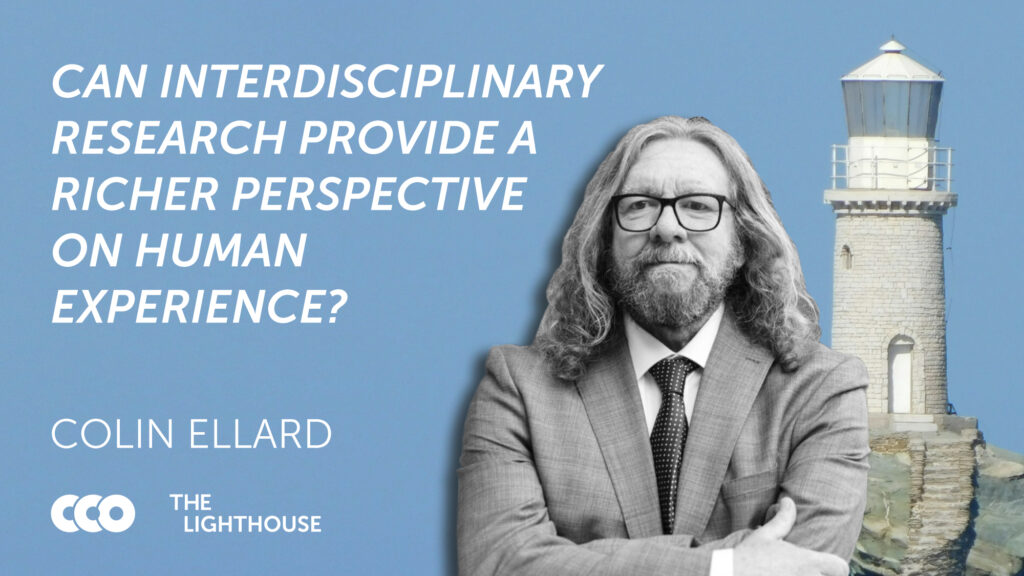The rationale of the smart as a means for improving, designing and building our cities has reached a tipping point of acceptability. Indeed, such is the take-up rate among urban planners that we are today returned to the age of the emperors, one in which it is possible – and considered by some desirable – to design, make and populate a city from scratch, the most obvious example being South Korea’s Songdo, the world’s so-called smartest city. Unfortunately, as enamoured as we are by our technological prowess, we are in danger of losing sight of what cities are all about: the experiences of people being people.
A dystopia
From the perspective of the urban planner’s spreadsheet, it’s easy to see why somewhere like Songdo in South Korea might appeal. Without history, built on reclaimed land outside of Seoul, it is a year zero purpose-built city, a clean, super-connected mega-sized business district, one that has borrowed, as its marketing materials often say, from the best of the world’s greatest cities. It has its own Venetian canal system. It has a central park. It’s underpinned by a package of ‘smart services’, managing everything from the home to traffic to health. It’s made for an environmentally sustainable community. It offers, in the words of one of its key IT providers, ‘the ultimate lifestyle and work experience.’ It is representative, as MIT’s Mike Joroff says, of ‘a new industry of city building’, one that has the engineer ride ideological point.
However, like the branded cities of old, built by kings as singular testaments to their omniscient powers, Songdo is also the result of a fundamental misunderstanding of what it takes for a city to be a city. A joint venture between American developers, South Korean constructors and local government, it mistakes people for categories of user.
The planners and developers reimagined the experiences of their “users” – into spreadsheet-led categories: financiers, technologists, bio-pharmacists, commuters, residents, patients, relaxers – as part of a vast and predetermined system of input-output solutions, one so technologically advanced as to have done away with the need for ‘3-D’ or ‘dirty’, ‘dangerous’ or ‘difficult’ industries.
Bereft of the messiness of manufacturing and municipal service industries, of crowds, of dirt, and of the organic and often anarchic growth of the street, it is an invention dedicated to an ‘international community’ of ‘forward-thinking individuals and companies’. It’s so clean – safe and predictable – as to be hyper-hygienically unnatural. It’s not home. It’s a technocrat’s wet dream- had in the 1950s.
Insert human
Much like technologists tend to champion the democracy of the internet, so advocates of the Smart City speak of the equality of access and opportunity, strategically prioritising technical platforms, infrastructure, project development and information systems in the name of the tens of thousands of projected users. Going even further, Songdo IBD (the city’s local authority) speaks of creating ‘an unparalleled quality of life as technology, resources and innovation come together to create a world class international community.’ Welcome, say its American developers Stanley Gale, to the world’s first ‘city in a box’, eminently transferrable, and for about $40 billion.
Leaving aside the moral implications of its somewhat rarefied class of desirable citizens, Songdo’s philosophy for city building begins with the absence of that which makes a city a city: the human. Whatever the technologically engineered strategic visions of the likes Stanley Gale, which would have us confuse the needs of a city with those of a company, people are not the end result of an engineer’s city building matrix. The city – as the lead developer of Kings Cross Central Argent St George states in its Principles for a Human City (2000) – is about people. For Argent, this means everyone who has any interest (past, present or future) in the city, which is why before deciding on any strategy, before making any plans, before laying a single brick for what would become a fiendishly complex project, Argent’s chief executive Roger Madelin would meet 7,500 people at 353 different meetings, to which he travelled on his bicycle.
It’s worth pausing for a moment on this, the image of the head of one of the world’s leading developers cycling about a rundown piece of London to listen to the experiences, views and ideas of thousands of its people. Compare this to the relatively people-less top of the value stack that serves as the smart strategy for the development of Songdo. Compare it to the United Arab Emirates’s Masdar, or indeed the plans for many of the world’s soon-to-be-realised purpose built Smart Cities. Compare it, even, with the consultation process that goes into any large-sized urban development. In a recent piece of research envisioning the themes for the strategic framework for the development of a prominent area of an Australian city, the difference between what we imagined people wanted and what we discovered by getting out from behind our desks and asking was startling: while we came up with set of well-meaning, positive and worthy themes, the people who live or work in and regularly visit the area were all for something much more subversive, underground and risky.
Roger Madelin’s 353 meetings served as the evidence base for the document that sets out the philosophy of principles that sees Kings Cross Central having become 17 years later exactly what it set out to be: ‘a public piece of London’, a mixed use quarter, home to two schools, a university, a cookery school, a mobile urban garden, 2000 new homes, and 24 acres of open space. It’s the result of vision informed by a deep knowledge of what makes Kings Cross Kings Cross, one that understood full well its historic significance as a transport hub, its late twentieth century reputation as a mecca for underground dance music, its relevance as a buffer between leafy north London and the borough of Camden, and the central importance of its canal, once a no-go area, and which today serves as a walkway for all, one stretching as far as Limehouse, in east London. All this from a man on a bicycle who saw the value in spending time listening to the very people his work would directly affect, perhaps for the rest of their lives. Cities, lest we forget, begin with people.
Plan for experience
The Kings Cross Central development is not a utopia. The key to its achievement is not to be found in its architectural prowess, which has its critics, most notably the late Zaha Hadid. Nor has it much to do with its advertised provision of affordable housing, which remains something of a misnomer. It has very little to do with its adoption of smart technologies, which though itegrated hardly compare with those that form the vast digital infrastructures of Songdo. Rather, it has everything to do with having got the first elements of its strategy very right: in focussing on people, and on people from all walks of life, people with an almost incomprehensibly large range of interests, needs and dreams, it designed for the experience of being in the city, a design that factors in or choreographs as much for the unpredictable as it does the expected.
This capacity for designing for surprise goes beyond the logic of the machine. It goes beyond the expectations of form and function. It questions the cult of efficiency. It repurposes the physical stuff of city as – to paraphrase the American architect Jon Jerde – the backdrop to the event that is always taking place in the space that that stuff helps create. It begins with a vision of – and designing for – the experience of people in public spaces. Tapping into the local, and into the notion of the family in community, Argent and its many partners championed and continue to champion people claiming and reclaiming spaces, and well before many of the buildings were open for use. Thinking back on the much more radical views of those consulted over the aforementioned development in Australia, it’s the kind of approach that allows for the dangerous, for the shock of the outsider, and for the experimental. It plans for the human.
In this respect, Argent’s championing of the experiences of real people over the data-truths of the spreadsheet flips the Smart City value stack on its head. Experience always informing place. Rather than automatically doffing its cap to the area’s architectural heritage, and creating hierarchy (like most of London has in its Regency and Georgian buildings), Argent’s is an approach that both cherishes the past and customises it to the needs of the present and the future. The appropriation of the granary by Central St Martins stands as fine example, the handing of the scheme’s most important historical building over to an art school setting the tone for the whole project, and giving fair sign of a developer wholly uncowed by the weight of the past.
Light years away from Songdo’s rigid archaic delineation between work, rest and play, such a relevancy pits people over the hardware of the city. It escapes the control that Smart City advocates dream of exercising over in how we use the spaces in between all those delineated areas. Rather than interface with a suite of smart services from the comfort of one’s technologically integrated home, it’s a design that invites those that live, work or ‘be’ in Kings Cross to constantly create their own city. It is a vast urban stage, one set for scenes whose narratives play out in real time, and where the spectator – such is the importance place on the energy of the individual, the group, and the crowd – is also the spectacle. Full to the brim of the messiness of the live, it’s the life of a locally informed, living community. It’s different. It’s seductive. It’s jam packed with personality. It’s the experience of living in a real city.
Toward a new software
The difference between Songdo and Kings Cross Central is a relatively simple one. A Smart City like Songdo consists of set of codes for a template for a hardwired entity that could just as well exist anywhere, its desired community defined not by the time-formed personality of a people breathing life into space through its many and multifaceted doings, but rather by the curriculum vitae of a specific type of skill set. Kings Cross Central, on the other hand, could only ever be at Kings Cross Central, its buildings and streets activated by the energy of the people who gave it life in the first place. One is a moveable box worth $40 billion; the other a unique place, activated – sustained, replenished – by the experiences of people, and as such priceless.
To appropriate Smart City speak, this activation is the software end of the design for any development; be it as apparently insignificant as the coffee shop at the end of the street or something as vast and experimental as Songdo. Rather than begin, therefore, with masterplanning for the hardware of a city, the infrastructure, the smart systems, begin instead with its software; begin with a strategy for finding out what people want; begin with a masterplan for experience. Imagine the story of the development as the experience of the human. Design with that story in mind: employ the right people; pile resources into on-the-ground research; introduce, test and refine the findings. From this, create a ‘bible’ for all stakeholders, one that acts as meaning gel for all that will come.
Roger Madelin and his bike is an undoubtedly romantic explanation for the success of Kings Cross Central. No doubt he was assisted in the activation of his musings by a large and able Argent experience design team. Even so, whatever the truth, the bible for the subsequent development was the slim, relentlessly people-focussed Principles for a Human City. From it sprung a new-old ‘piece of London’, an exemplar for what it takes to birth, manage and complete a highly complex piece of urban planning. Any doubts as to the proof of its ongoing success – and by extension any experience design – ought to allayed by the following: one, inspired by the one-off ethos that it espouses, the brands flocking to the likes of its Coal Drop are designing spaces quite unlike spaces they’ve designed elsewhere; two, Google is set to move in, drawn not only by Kings Cross’s Smart City credentials, its transport connections, and the office place flexibility offered by its new landlord, but also by the fact of the area’s vibrancy, the university, the vast potential of the graduates; and three, its where somebody called Yewon Shim, a talented 24 year old masters graduate from Seoul, has chosen to pursue her dreams. The first and second of these, Songdo would kill for. The last, it has failed – and precisely for all the reasons why Kings Cross has not.










